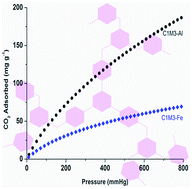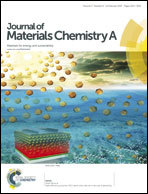A facile synthesis of microporous organic polymers for efficient gas storage and separation†
Abstract
A series of porous hyper-cross-linked polymers with excellent physiochemical stability have been designed and prepared facilely through template-free Friedel–Crafts alkylation reactions between benzene/biphenyl/1,3,5-triphenylbenzene as co-condensing rigid aromatic building blocks and 1,3,5-tris(bromomethyl)benzene or 1,3,5-tris(bromomethyl)-2,4,6-trimethylbenzene as cross-linkers under the catalysis of anhydrous AlCl3 or FeCl3. The systematic study of gas uptake ability shows that anhydrous AlCl3 is a much more effective catalyst than anhydrous FeCl3. The synthesized polymers are thermally stable and are predominantly microporous with high surface areas up to 1783 m2 g−1. In addition, they exhibit high H2 and CO2 uptake capacity/selectivity. Among these materials, C1M3-Al has the highest H2 uptake capacity at 77 K and 1 bar (19.1 mg g−1) and CO2 uptake capacity at 273 K and 1 bar (181 mg g−1); the best CO2/N2 (15/85) selectivity calculated by IAST at 273 K and 1 bar belongs to C1M2-Al (32.3). Moreover, the synthesis route exhibits cost-effective advantages, which are essential for scale-up preparation, thus showing great potential for clean energy applications.



 Please wait while we load your content...
Please wait while we load your content...